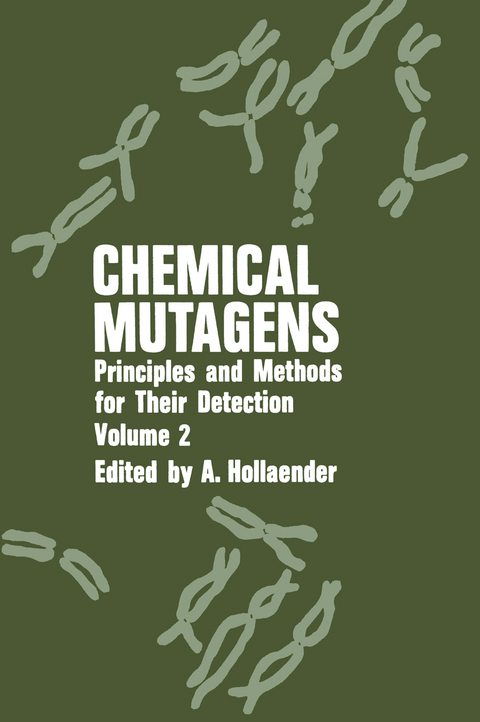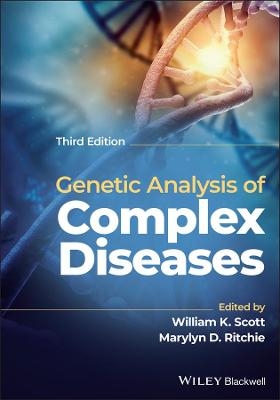
Chemical Mutagens
Springer-Verlag New York Inc.
978-1-4615-8971-6 (ISBN)
of Volume 2.- 11 Measurement of Recessive Lethal Damage Over the Entire Genome and at Two Specific Loci in the ad-3 Region of a Two-Component Heterokaryon of Neurospora Crassa.- I. Introduction.- II. Measurement of the Genetic Effects of Mutagenic Treatment.- III. Characterization of Presumptive ad-3 Mutants.- IV. Media and Chemical Solutions.- V. References.- 12 Aspergillus.- I. Introduction.- II. Life Cycle and Genetic Analysis.- III. Mutation.- IV. Conclusions.- V. References.- 13 Higher Plants.- I. Introduction.- II. Test Systems.- III. Compounds Tested for Mutagenic Activity by Treatment of Seeds.- IV. Special Techniques That Have a Higher Resolving Power.- V. General Evaluation.- VI. Acknowledgments.- VII. References.- 14 Procedures for Culturing Diploid Cells and Preparation of Meiotic Chromosomes from Dwarf Species of Hamsters.- I. Introduction.- II. Background Information.- III. Handling the Diploid Cell.- IV. Spermatogonial and Meiotic Chromosome Preparations.- V. Bone Marrow Biopsy Procedure.- VI. Discussion.- VII. Acknowledgments.- VIII. References.- 15 Induction and Analysis of Gene Mutations in Mammalian Cells in Culture.- I. Introduction.- II. The Cell Material.- III. Utilization of In Vivo Markers.- IV. Detection of Recessive Mutations in Cell Cultures.- VI. Characterization of Newly Isolated Variants.- VII. Procedure for Mutation Induction.- VIII. Concluding Remarks.- IX. Acknowledgments.- X. References.- 16 Inducing Mutations with Chemicals in Habrobracon.- I. Introduction.- II. Maintenance of Habrobracon and Ephestia.- III. Scheme for Mutational Analysis.- IV. Application of Mutagens.- V. Conclusions.- VI. References.- 17 The Detection of Mutations in Drosophila melanogaster.- I. Introduction.- II. Advantages of Drosophila as a Test Organism.- III. Limitations of Drosophila as a Test Organism.- IV. Lethal Tests.- V. Tests for Recessive Visible Mutants.- VI. Tests for Chromosomal Rearrangements.- VII. Tests for Loss of X or Y Chromosomes.- VIII. Tests for Dominant Lethals.- IX. Tests for Half-Translocations.- X. Staging of Germ Cells.- XI. Techniques for Collecting Flies of a Desired Sex.- XII. Review of Literature.- XIII. Summary.- XIV. References.- 18 Root Tips for Studying the Effects of Chemicals on Chromosomes.- I. The Material.- II. Treatment of Root Tips with Chemicals.- III. Fixation and Staining of Root Tips.- IV. Scoring of Slides and Types of Aberration.- V. Comparison Between the Effects of Chemicals on Chromosomes in Root-Tip Cells and in Cultured Animal Cells.- VI. Acknowledgments.- VII. References.- VIII. Suggested Reading.- 19 Cytogenetic Studies in Animals.- I. Introduction.- II. Experimental Design.- III. Classification of Chromosomal Aberrations.- IV. Localization of Chromosomal Aberrations.- V. Timing of Chromosomal Damage.- VI. Meiotic Studies.- VII. In Vivo and in Vitro Studies.- VIII. Specific Techniques.- IX. Summary.- X. References.- 20 Specific Locus Mutation in Mice.- I. Introduction.- II. The Method, Its Advantages and Disadvantages.- III. Results Obtained.- IV. Conclusions.- V. References.- 21 Dominant Lethal Mutations in Mammals.- I. Introduction.- II. The Dominant Lethal Syndrome.- III. The Estimation of Dominant Lethals.- IV. The Genotypes of Dominant Lethals.- VI. Dominant Lethals in Female Germ Cells.- VII. General Validity of the Dominant Lethal Test.- VIII. Synergistic Effects.- IX. Review of Chemicals Tested as Dominant Lethal Mutagens in Mammals.- X. Integration of the Dominant Lethal Assay and Other Mutagenicity Tests into General Toxicological Practice.- XI. References.- 22 TheHost-Mediated Assay, a Practical Procedure for Evaluating Potential Mutagenic Agents in Mammals.- I. Introduction.- II. Materials and Methods.- III. Results.- IV. Conclusion.- V. References.- 23 Human Population Monitoring.- I. Introduction.- II. A Classification of Mutational Effects.- III. Criteria for a Mutation-Monitoring System.- IV. Some Ways of Amplifying the Mutation-Detecting Power of Monitoring Systems.- V. Monitoring for Germinal Mutations.- A. Monitoring for Dominant Mutant Phenotypes.- B. Biochemical Monitoring.- VI. Summary.- VII. References.- Conclusion.- Author Index.
| Zusatzinfo | XXII, 342 p. |
|---|---|
| Verlagsort | New York, NY |
| Sprache | englisch |
| Maße | 152 x 229 mm |
| Themenwelt | Medizin / Pharmazie ► Medizinische Fachgebiete |
| Studium ► 2. Studienabschnitt (Klinik) ► Humangenetik | |
| Naturwissenschaften ► Biologie ► Biochemie | |
| Naturwissenschaften ► Chemie ► Organische Chemie | |
| Veterinärmedizin | |
| ISBN-10 | 1-4615-8971-1 / 1461589711 |
| ISBN-13 | 978-1-4615-8971-6 / 9781461589716 |
| Zustand | Neuware |
| Haben Sie eine Frage zum Produkt? |
aus dem Bereich


